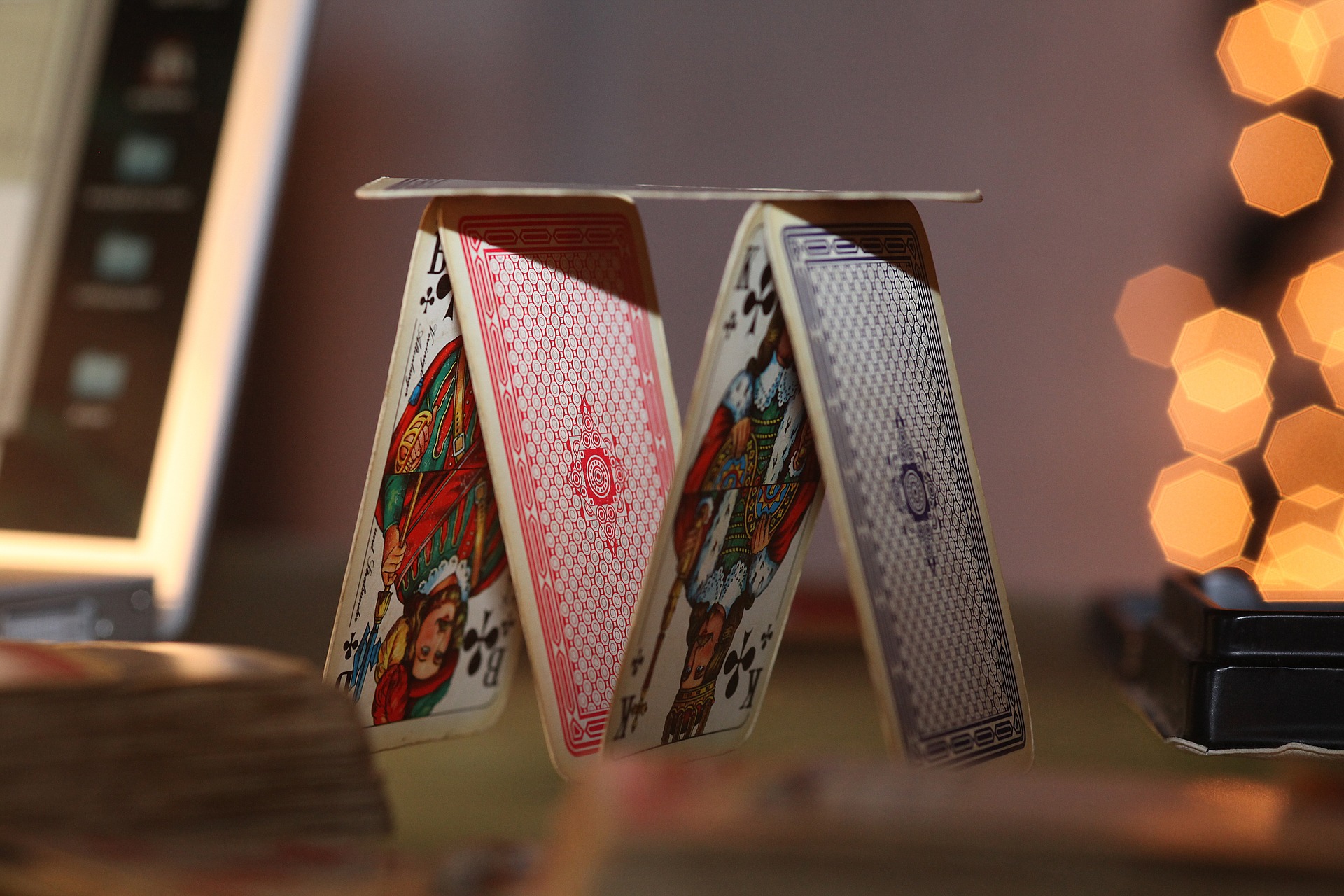Thou shalt not cheat!

Every once in a while, I have the good fortune of reading a court case which is both fun and educational. The UK Supreme Court case Ivey (Appellant) v Genting Casinos (UK) Ltd t/a Crockfords (Respondent) is one such case, which tells an interesting story, while also explaining to the public the limits of cunning trickery in gambling.
Ivey v Genting Casinos (UK) Ltd t/a Crockfords
The facts of the case have the flavour of a scene from the Ocean’s trilogy, and hearing Lord Hughes recount the story is a real treat (Lord Hughes delivered the unanimous decision of the court, and a video of the judgment’s summary is available at supremecourt.uk).
On the night of 20 August 2012 Mr. Ivey, a professional gambler, together with another professional gambler, Ms. Sun, joined a table of Punto Banco Baccarat at the defendant’s casino (Crockfords). With Ms. Sun’s help, and by employing a technique called “edge sorting,” by 6:41 PM the next day, the claimant had accumulated winnings amounting to £7.7 million.
Punto Banco Baccarat is a game of chance, not skill
Six or eight decks of 52 cards are dealt from a shoe, face down, by a croupier. Ordinarily, the croupier slides two cards to the position of the player (“Punto”) and two to the position of the banker (“Banco”). In certain circumstances, the croupier must deal one further card, either to player or banker, or to both. The goal of the game is to achieve, on one of the two positions, a combination of two or three cards which, when added together, is nearer to 9 than the combination of the other position. Ace to 9 cards count at face value, while 10 to king count as nothing. If the total is over 9, only the last figure of the total counts (e.g. if the player has a 5 and a 7, his combination counts as a 2).
Edge sorting
“Edge sorting” is a technique which improves the odds of a player by making it possible to identify high value cards and distinguish them from the other cards coming out of the shoe. The technique becomes possible when the pattern printed on the back of the cards is slightly asymmetrical, due to very small differences which can be observed between the two long edges of a card. If a player can manipulate the circumstances so that for the high value cards one long edge is facing in a certain direction, while for all the other cards the other long edge will be oriented in that direction, then he can drastically improve his odds.
In Punto Banco, the high value cards are 7s, 8s, and 9s. After playing with no advantage through parts of four shoes, Mr. Ivey asked for a new shoe of cards. The new shoe had cards with a pattern on the back which could be manipulated by way of “edge sorting.” Mr. Ivey first asked the senior croupier overseeing the game if he could play with the same cards later if he is winning by the end of the current shoe. The senior croupier accepted, because he was the only one touching the cards and no cards were bent in the process. Ms. Sun then, pretending to be superstitious, asked the croupier to turn certain cards in a different direction from others, saying that she believed that if the croupier would do that, it would change her luck. Croupiers are encouraged by their employers to indulge and play along with superstitious behaviour. It plays in the Casino’s favour if players erroneously believe that lucky charms or lucky practices will work in their favour, when in fact they do not improve their odds at all.
Mr. Ivey’s bets were rather modest while this shoe was played, but at the end of the shoe he announced that he was winning and wanted to play with the same cards. After the cards were reshuffled, the accuracy of his bets increased. Although the difference in the two edges was small, with a sharp eye, Mr. Ivey could now see before a card was taken out of the shoe whether it was a high value card or not. He played until the early hours of that morning and in the afternoon of the next day, always with the same eight decks of cards. As mentioned before, his total winnings amounted to £7.7 million before he retired from the game on the evening of the 21st.
The practice after such a large win is for the casino to conduct an ex-post investigation. Before this incident, nobody at Crockfords had ever heard of “edge-sorting.” After reviewing CCTV camera footage, the investigators identified the method used by Mr. Ivey. Following the investigation, Crockfords returned Mr. Ivey’s deposit stake (£1 million), but declined to pay Mr. Ivey’s winnings, arguing that he had cheated. Mr. Ivey then sued the casino to recover his unpaid “winnings.” The trial judge and a majority of the Court of Appeal ruled in favour of the defendant. The Supreme Court, in a unanimous decision, affirmed the two judgments, and rejected Mr. Ivey’s appeal.
The issues addressed by the Supreme Court were the meaning of the concept of cheating in gambling; whether dishonesty was a necessary element of cheating; and what is the proper test for dishonesty, if dishonesty were to be considered an essential element of cheating.
Lord Hughes’ opinion in this case (with which Lord Neuberger, Lady Hale, Lord Kerr and Lord Thomas agreed) is very detailed and carefully written. In summary, it was held that what Mr. Ivey did was in breach of an implied contractual term not to cheat, and therefore he was not entitled to his “winnings”; dishonesty is not a necessary element for cheating; and the proper test for dishonesty is an objective test, using the standards for dishonesty that “ordinary decent people” hold.
Funny analogies
The arguments made by Lord Hughes are rich in quotable material and besprinkled with funny analogies. One learns, for instance, that “the runner who trips up one of his opponents is unquestionably cheating, but it is doubtful that such misbehaviour would ordinarily attract the epithet ‘dishonest’”; and “[t]he stable lad who starves the favourite of water for a day and then gives him two buckets of water to drink just before the race, so that he is much slower than normal, is also cheating, but there is no deception unless one manufactures an altogether artificial representation to the world at large that the horse has been prepared to run at his fastest.” Conversely, “the unorthodox lead or discard at bridge is designed to give the opponent a misleading impression of one’s hand, but is part of the game and not cheating;”[5]and, my favourite, “pretending to be stupid at the poker table, so that one’s opponent does not take one seriously, and takes risks which he otherwise might not, may or may not be another example [of deception which does not amount to cheating].”
One striking aspect of Lord Hughes’ opinion is the absence of definitions. “Cheating” and “dishonesty” are treated as “I know it when I see it” concepts. In regard to “dishonesty,” this was made explicit in the judgment: “[D]ishonesty is by no means a defined concept. On the contrary, like the elephant, it is characterised more by recognition when encountered than by definition.”[8] Value judgment on the honest or dishonest character of a person’s behaviour was deemed an issue of fact, not law, to be settled by the fact-finder (jury or judge) according to the standards held by ordinary decent people. “Cheating” was analysed in a similar manner. Defining the concept of cheating was described as “very unwise,” and a “near impossible task.” It was also deemed impractical: what ordinary decent people think “cheating” is changes from case to case, depending on the nature and the particular rules of the game the parties engage in.
Contract law
Although there were two layers of legal rules governing this case, the Gambling Act 2005 and general contract law, this case was settled in the end by resorting to a third normative layer, composed of the rules and customs inherent to the game of Punto Banco Baccarat. Contract law was the gateway into this third normative system, the question whether Mr. Ivey breached an implied contractual term being contingent on whether he breached the rules and customs of the game. The UK Supreme Court was therefore the ultimate referee in a game of Punto Banco Baccarat.
This was not the first time a supreme court relied on the norms and customs of a game in order to settle a legal dispute. The French 1972 case of Rochman v. Durand was decided on the basis of the customs of the game of football. This was a tort case, wherein the victim suffered injuries as a consequence of a collision with the goalkeeper of the opposing team who fell on the ball with the intention of saving it. Because this was a perfectly normal tackle and in line with the rules of the game, the goalkeeper was not at fault, and therefore the claimant’s tort action was dismissed.
However, such cases are rare. The Supreme Court cannot make determinations on the rules and customs of a game in any given circumstances. The dispute must first be framed in a legal manner; an access point into the legal system must be found. It would be hard to imagine, for instance, a case in which the Supreme Court would settle a dispute regarding the offside trap in football. But who knows?
| More blogs on Law Blogs Maastricht, originally published on M-EPLI |
-
 A.D. OnMore articles from A.D. On
A.D. OnMore articles from A.D. OnDaniel On is a Ph.D. researcher at Maastricht University (Faculty of Law), and a member of the Maastricht European Private Law Institute (MEPLI). He received his LL.B. degree from the Babeş-Bolyai University in Cluj-Napoca, in 2010. He also holds an LL.M. in Private Law (Babeş-Bolyai University, 2011) and an LL.M. in Comparative Law (Louisiana State University, 2013). He is the recipient of the first A. N.
Other blogs:
Also read
-
On 23 February 2022, the European Commission released the much anticipated proposal for the Directive on Corporate Sustainability Due Diligence. The aim of this Directive is to reduce human rights violations and environmental harms across the global value chain by making large companies carry out...
-
Achieving a sustainable way of life requires massive societal changes and (private international) law should enable, rather than hamper, the realization of such essential goals.
-
Recent days have seen the meteoric rise and fall of the European Super League (ESL). This new league would have consisted of 15 founding clubs and 5 other clubs; the former consisting of ‘big clubs’ which could not be relegated and the latter in clubs who performed well over the past years on a...


